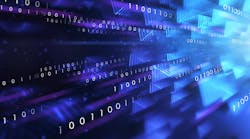Opening the Doors for Quantum Computing Applications in Electric Power Grids
The electric power grid is undergoing an unprecedented transformation as a result of the growing proliferation of distributed energy resources (DERs), increased reliance on variable renewable generation, emergence of new types of loads such as electric vehicles (EVs), and more proactive customers. These sweeping changes are heightening efforts to collect data for more accurate system analysis, control, and operation. The enabling component is a strong computational foundation that converts data into actionable information.
Computation has been central to power system management for decades. From the earliest efforts to solve network power flow problems to today’s use of multi-time-scale and multi-dimensional power systems, advanced computation has enabled their implementation. As electric utilities have installed advanced sensors such as smart meters, there is now significantly more data to process.
Processing this data has driven not just significant research and study in this area, but also policy concerns, including in-depth work by the U.S. Department of Energy (DOE) to identify the computational needs of the next generation electric power grid. High priorities include cloud computing, hierarchical modeling, contingency analysis, modeling of infrastructure interdependencies, control of multi-time-scale power systems, optimization under uncertainty, unit commitment, and economic dispatch.
Now, however, grid operators are collecting and analyzing data to address far greater concerns, including uncertainty. As the power system is increasingly reliant on intermittent renewable generation as well as more intermittent loads, developing forecasts for the state of the system requires different kinds of analytics capabilities. The problem, of course, is that using existing mathematics on more powerful computers is not a practical approach to address such a broad new class of complexities, especially the uncertainties of intermittent renewable generation and the challenges it poses for system forecasting. Meeting the needs of the grid of the future will require new classes of models and algorithms.
Quantum computing addresses these needs or at least moves us in the direction toward a solution. A quantum computer is a computer that works based on the principles of quantum mechanics (a branch of mechanics that deals with the mathematical description of the motion and interaction of subatomic particles). A quantum computer is not a better or faster classical computer – the same way that a light bulb is not a better candle or an automobile is not a faster horse. There are major differences between the two technologies from their respective most basic level of computing, that is, a bit. Classical computers operate on bits that are generated through transistor operations and can take a value of 0 or 1. Quantum computers, on the other hand, use quantum bits (qubits), which are developed based on the subatomic particle operations and can take a value of 0, 1, or any combination of 0 and 1 (called superposition). Superposition is a unique characteristic of qubits that along with the other main characteristic, that is, entanglement or the correlation between quantum particles, offer significant power to process a substantially large number of calculations simultaneously.
The striking processing power of quantum computers provides an opportunity to address many of computational needs of the grid of the future. Examples may include general topics of uncertainty quantification, simulation and analysis, and methods for characterizing and controlling resilience and reliability. What is needed, however, is a coordinated research effort by power system engineers, computer scientists, physicists, and mathematicians to investigate how this technology can be applied to solve some of the emerging problems that the grid of the future will bring. Moreover, there is a need for enhanced partnerships between researchers and the industry to develop collaborations focusing on identifying proper applications of quantum computing to power systems as well as research and development of quantum algorithms that can be employed in solving some of the existing and emerging grid of the future problems.
Building the grid of the future requires application of future technologies that are capable of solving the problems that haven’t yet been solved or the challenges that are yet to appear. Quantum computing is a promising future technology that will support the journey of building a more resilient, reliable, safe, and secure grid of the future.


